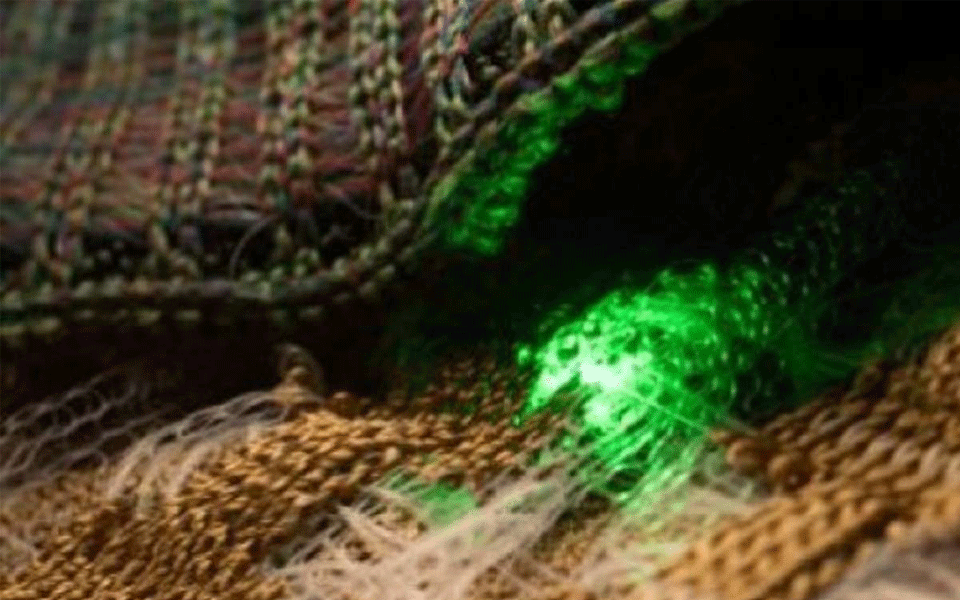New York, Aug 12 : Researchers have, for the first time, produced fibres with embedded electronics that are so flexible they can be woven into soft washable fabrics and made into wearable clothing.
Embedding high speed optoelectronic semiconductor devices, including light-emitting diodes (LEDs) and diode photodetectors, into washable fabrics also makes it possible to produce clothing that communicates optically with other devices.
This discovery, described in the journal Nature, could unleash a new 'Moore's Law' for fibres, in other words, a rapid progression in which the capabilities of fibres would grow rapidly and exponentially over time, said researchers from the Massachusetts Institute of Technology (MIT) in Boston.
The key breakthrough for producing these new fibres was to add to the preform light-emitting semiconductor diodes the size of a grain of sand, and a pair of copper wires a fraction of a hair's width.
When heated in a furnace during the fibre-drawing process, the polymer preform partially liquifies, forming a long fibre with the diodes lined up along its centre and connected by the copper wires.
"We are anticipating the emergence of a 'Moore's law' analogue in fibres in the years ahead," said Yoel Fink from the varsity.
"It is already allowing us to expand the fundamental capabilities of fabrics to encompass communications, lighting, physiological monitoring, and more. In the years ahead, fabrics will deliver value-added services and will no longer just be selected for aesthetics and comfort," Fink added.
In this case, the solid components were two types of electrical diodes made using standard microchip technology: LEDs and photosensing diodes.
The resulting fibres were then woven into fabrics, which were laundered 10 times to demonstrate their practicality as possible material for clothing.
One of the advantages of incorporating function into the fibre material itself is that the resulting fibre is inherently waterproof.
To demonstrate this, the team placed some of the photodetecting fibres inside a fish tank.
A lamp outside the aquarium transmitted music through the water to the fibres in the form of rapid optical signals.
The fibres in the tank converted the light pulses -- so rapid that the light appears steady to the naked eye -- to electrical signals, which were then converted into music. The fibres survived in the water for weeks.
Let the Truth be known. If you read VB and like VB, please be a VB Supporter and Help us deliver the Truth to one and all.
Tumakuru (PTI): Karnataka Home Minister G Parameshwara on Saturday said his recent remarks on the demolition of properties linked to those involved in narcotics trade were "misunderstood and misinterpreted".
His clarification follows remarks made two days ago on the government's uncompromising crackdown on the drug menace, including action against properties linked to foreign nationals allegedly involved in drug trafficking.
"It is unfortunate. It is taken in the wrong sense. I didn't mean that tomorrow itself I am going to send bulldozers and demolish the houses. That was not my intention. It was wrongly taken," he told reporters here.
Responding to Congress MLC K Abdul Jabbar's question in the legislative council on the growing drug menace in Bengaluru, Davangere and coastal districts, the minister on Thursday detailed the extensive enforcement measures initiated since the Congress government assumed office.
Pointing to the involvement of some foreign nationals, the minister had said, "Many foreign students from African countries have come to Karnataka. They are into the drug business. We catch them and register cases against them, but they want the case to be registered because once the case is registered, we cannot deport them."
"We have gone to the extent of demolishing the rented building where they stay," he had said.





